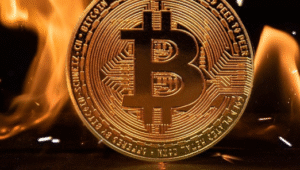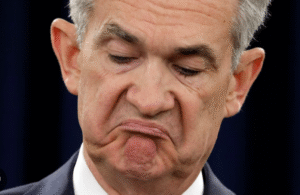$SPY $VOO $BTC
#ETFs #WallStreet #Investing #Finance #StockMarket #MutualFunds #FinancialMarkets #USStocks #AssetManagement #IndexFunds #Cryptocurrency #MarketTrends
Global exchange-traded fund (ETF) assets have hit an unprecedented milestone of $15 trillion, marking a significant shift in investor preferences as traditional mutual funds lose their luster. This remarkable growth underscores a broader trend within the financial markets. ETFs, known for their tax efficiency, lower costs, and versatility, continue to draw in investors on a massive scale. Institutional and retail investors alike are gravitating toward these funds, fueled by their transparent structures and ability to track a diverse range of indices and sectors.
The United States remains at the epicenter of this movement, accounting for the majority of ETF inflows. Investors have been particularly bullish on Wall Street, pouring capital into equity-focused ETFs that align with growth sectors in the U.S. economy. Funds tracking major indices such as the S&P 500 have seen substantial inflows, buoyed by strong corporate earnings and optimism surrounding economic resilience. Meanwhile, actively managed ETFs have also experienced rising demand, further reinforcing the U.S. dominance in the ETF space. However, experts caution that this enthusiastic shift might introduce valuation risks, particularly if markets face heightened volatility or unforeseen macroeconomic shocks.
Globally, passive investing has emerged as a defining financial strategy, especially in the context of rising inflation and higher interest rates. Traditional mutual funds, often associated with higher fees and underperformance relative to benchmarks, are increasingly being substituted with low-cost ETFs. This seismic shift is not confined to equities alone. Fixed income ETFs, commodity-focused funds, and even cryptocurrency-themed ETFs are attracting new capital. For instance, Bitcoin-related ETFs have bolstered the growing overlap between blockchain technology and mainstream financial products, presenting an intersection of traditional and digital assets that appeals to a younger, tech-savvy investor base.
The surge in ETF demand comes at a time when diversification remains a key theme among investors wary of geopolitical tensions and slowing growth in certain regions such as Europe and Asia. Market participants are also leveraging sector-specific ETFs to target opportunities in areas like artificial intelligence, clean energy, and healthcare innovation. This concentrated interest has amplified the need for strategic asset allocation, prompting professionals to discuss whether ETFs will continue their meteoric rise or if regulatory headwinds could slow their progress. Regardless, the $15 trillion milestone reinforces ETFs as a transformative force in global finance, likely reshaping investment behaviors for years to come.











Comments are closed.